Six-toed cats: origin and characteristics

Animals of different feline breeds can be polydactic, which means such an anomaly as six-fingered. It is clearly visible externally - due to the presence of an extra toe, the legs of cats are wider and dexterous. And this does not hinder them, but rather helps them lead a fulfilling lifestyle, providing many benefits.

Advantages and disadvantages
Polydact, in relation to people and animals, means "multi-fingered". This is a trait that is transmitted at the genetic level. In humans, such a hereditary defect occurs, but this, as a rule, is one extra finger, and mainly the little finger. Polydactyl cats have a preaxial form of pathology - an extra thumb, although in fact there may be two. Such fingers are located on the side, but they can also be located at the same level with other, main ones.
In the latter case, the anatomical feature is called postaxial. However, both options are considered normal.
Extra toes are found on the front legs, but sometimes they are also observed on the hind legs at the same time. It is extremely rare that such a defect is noted only on the hind legs of the animal.

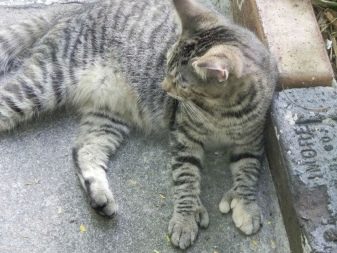
Certain advantages of having another part of the body are:
- excellent sense of balance;
- stronger grip and ability to cling better, in contrast to five-toed cats;
- increased skill in swimming and moving in the snow;
- light tread, along which it is impossible to hear the approach of an animal.
The fantastic tenacity of six-fingered cats amazes the imagination: with their wide paws, they can easily open cabinets and doors by deftly turning the handle. Such an animal is a real find for a professional trainer, especially since most of the individuals are distinguished by good intelligence and are easy to train. Not to mention the fact that all of these qualities make the animals excellent hunters.



But, along with such advantages, there are also disadvantages. Often, excellent anatomy entails:
- joint diseases;
- ingrowth of claws into the tissue of the paws;
- limb deformity.
The presence of extra phalanges is the cause of a predisposition to injury, and fingers that are joined together with the growth of claws can cause pain. In addition, the anomaly is often accompanied by infectious lesions of the nail base, dysbacteriosis of the stratum corneum, and uneven growth. In this case, the animal needs medical attention. Surgical removal is sometimes the best solution.
Fortunately, some pathologies can be cured, but the most unpleasant consequence of polydactyly is the birth of weak, non-viable cubs with health problems, especially in cats with a triphalangeal thumb.
Sick kittens have a congenital deformity of the forearms, therefore, in order to exclude the appearance of the next generation with obvious malformations, the animals have to be spayed.
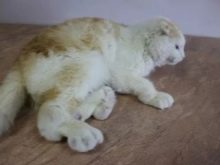
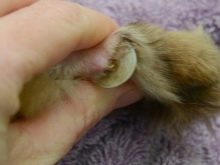

Natural origin
At different times, polydactyl animals were treated differently: as accomplices of witches or as a talisman bringing luck. Today the phenomenon of six paws has been studied, and pedigree animals born with one or more extra toes are recorded in special felinological systems, at least in America.
In nature, many fingers most common in Maine Coons - large individuals, which their natural habitat forced them to adapt to the harsh living conditions: to move swiftly and easily on ice and a thick layer of snow in order to overtake prey.
In accordance with studies of the genetics of this breed, it turned out that the six-fingered representatives of the feline are the result of the natural evolution of American cats.

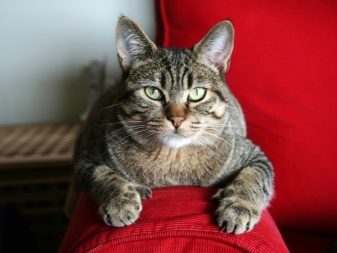
The largest population of individuals with such a mutation is noted in Boston city... Such animals were kept on ships to get rid of rodents, and thus they spread to different parts of the world. According to statistics, polydact is most often found in port cities.
Until some time, polydactyly was considered a marriage, so even animals with a pedigree did not participate in breeding and exhibition shows. But now the Maine Coons have this feature as a standard, and six-toed cats take part in championships organized for broad-footed representatives of the breed.


Selection features
Breeding six-fingered individuals has a special specificity, which is due to the unpredictability of the genetics of cats. And yet we managed to figure out how to breed Maine Coon offspring with polydactyly:
- to get kittens with a paw anomaly, only one parent with polydactyly is needed, and then the mating success will be 56%;
- two polydacty parents increase the chances of having polydactics by another 20%;
- if at least one parent has a homozygote - homologous chromosomes that do not split in subsequent generations, then all offspring may have a so-called anomaly.
By the way, the number of multi-fingered individuals of the feline squad is not limited to Maine Coons. At the moment, experts are engaged in the selection of such animals, and there is even an artificially bred breed - a pixie bob.
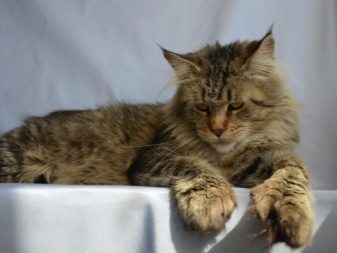

When purchasing a polydactyl kitten, the owner does not need to worry about the need for special care. Animals differ in needs that are identical to those of regular, five-toed cats. On the other hand, the predominant qualities of a polydact will certainly interest the owner; moreover, these animals have a lively mind, good memory and are easy to train.


Hemingway's pet traits
Ernest Hemingway, a famous writer and military journalist, did not pass by his love of unusual six-fingered animals. It all started with a pet named F. Keys, who anxiously guarded Ham's firstborn in the absence of the owners. Later on the island of Key West, near Florida, the writer received as a gift from a friend of the captain a white kitten with six toes on its front legs.
At that time, sailors believed that a six-fingered cat brings good luck, protects the ship from storms, and also destroys rats.
Snowball, as the cat Ham and his wife were named, became the ancestor of all poly-toed cats, and currently 50 of his descendants still live in the writer's dwelling, which has become a house-museum.



In Hemingway's feline paradise, on a small island, animals of various sizes and colors were collected, and each of them had its own character, but they were all treated kindly and awarded with bright nicknames in honor of world famous singers, actors and politicians. Half of the offspring from them, thanks to Snezhka, were born six-fingered, and now the house is home to animals that have two or even three extra fingers. This is a reliable fact, so there is no need to doubt that a wide variety of cat breeds are susceptible to rare mutations.
In general, polydactyly is discouraged by both veterinarians and breeders., but multi-toed pets have become so popular and in demand that they are still bred for sale. Many experts speak out directly about the inhuman attitude towards mutating cats, since complications against the background of birth defects often lead to the suffering of animals, but this is only one opinion among many other judgments.
For Hemingway's six-toed cats, see below.
































